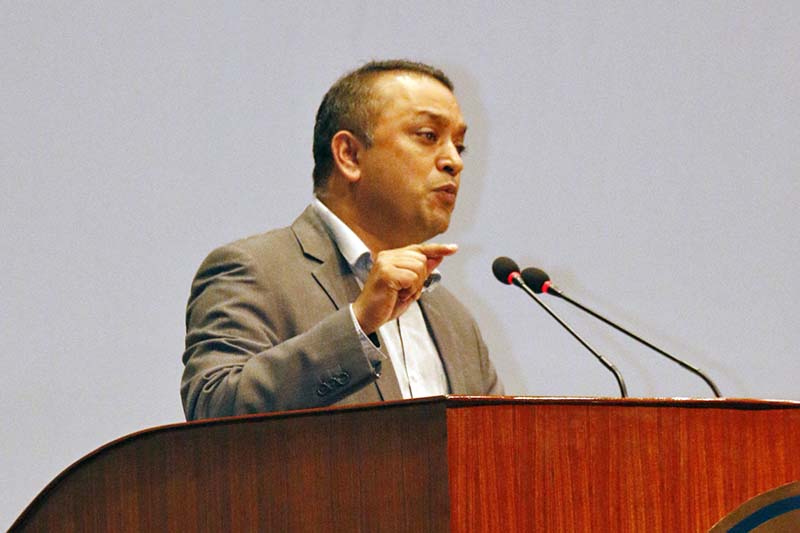Child, maternal mortality rates declining, says Minister Thapa
Kathmandu, February 7
Health Minister Gagan Kumar Thapa claimed that the country has seen great improvement in maternal and child health services.
He said maternal and child mortality rates were worryingly high before and during the 2015 earthquakes, but were significantly low now.
Speaking t the Joint Annual Review Meeting on ‘Annual Progress Report of the Health Sector Fiscal 2015/16’ organised by Ministry of Health today, Minister Thapa said it was the state’s responsibility to provide quality health services to all its citizens.
“The state had not been able to guarantee quality health services in the past because of political instability and mismanaged bureaucracy, but we are working towards rectifying these issues now. However, quality health care cannot be guaranteed with only the health ministry’s efforts,” he said.
Minister Thapa said that the ministry’s priority at the moment was to construct infrastructures to make health services accesible throughout the country.
“Our current objective is to ensure that health services are available in all districts according to the needs of each district, and not simply construct one hospital per district,” he said.
According to data presented at the meeting, the estimated maternal mortality ratio was 850 per 100,000 live births in 1990, which had declined to 281 per 100,000 live births in 2006. A study conducted on maternal mortality and morbidity in eight districts in 2008/09 indicated that MMR had further declined to 229.
The global estimate of MMR for Nepal was 190 in 2013 and 258 in 2015. Nepal aims to reduce it to 148 by 2017 and 125 by 2020.
Likewise, the mortality rate for children under five years of age has declined from 54 per 1,000 live births to 38, and neonatal mortality rate has fallen from 33 per 1,000 live births to 23. The NHSS targets to reduce under-five mortality rate to 34 by 2017 and 28 by 2020, and neonatal mortality to 21 per 1,000 live births by 2017 and 17.5 by 2020.
Dr Senendra Raj Upreti Secretary at the Ministry of Health said that unfortunately, the quality of services provided to people differed by ecology, caste, ethnicity, levels of urbanisation, and geography. Reviewing the report, he said the country had received Rs 565 billion in aid for the health sector, against Rs 783 billion expected in the fiscal year 2015/16.
He expressed hope that tangible improvement in the health sector may enable them to raise more funds in the future.






